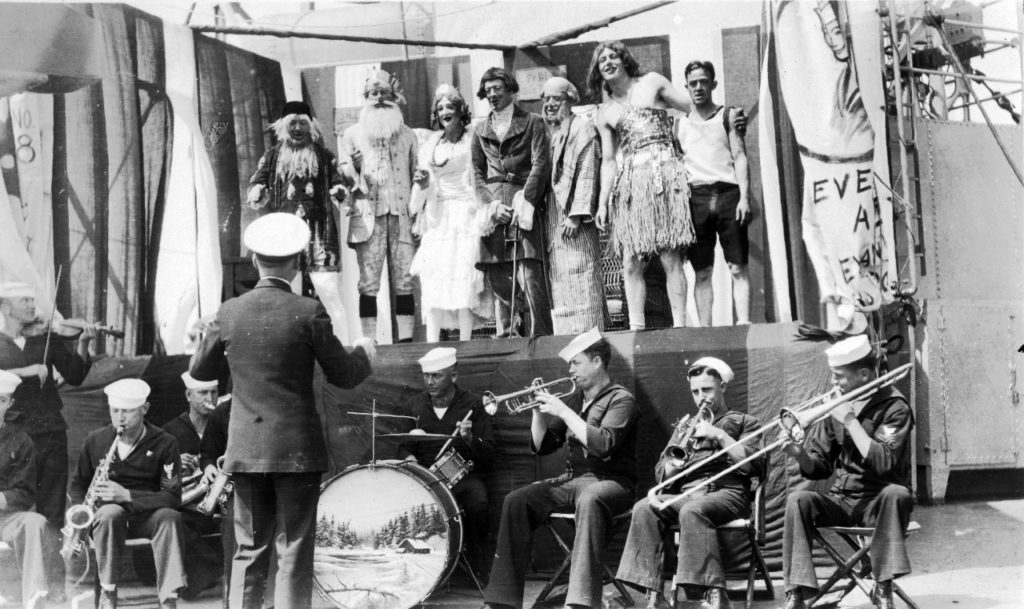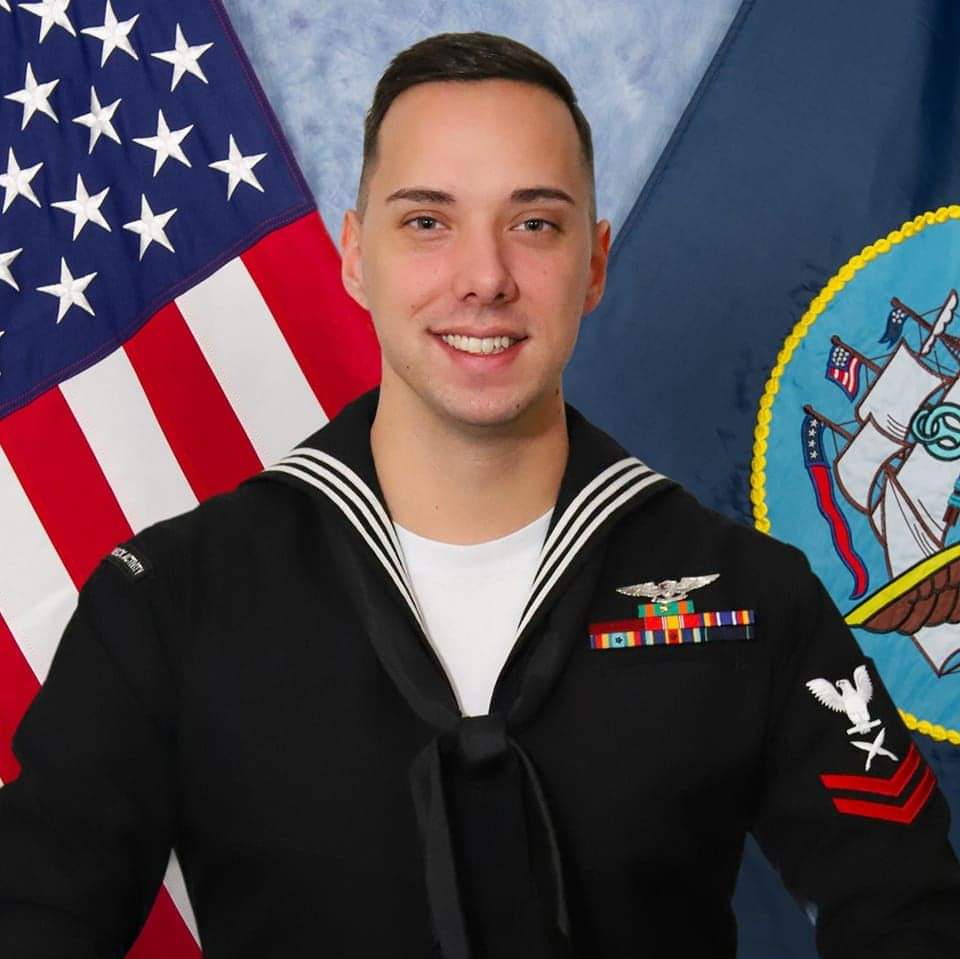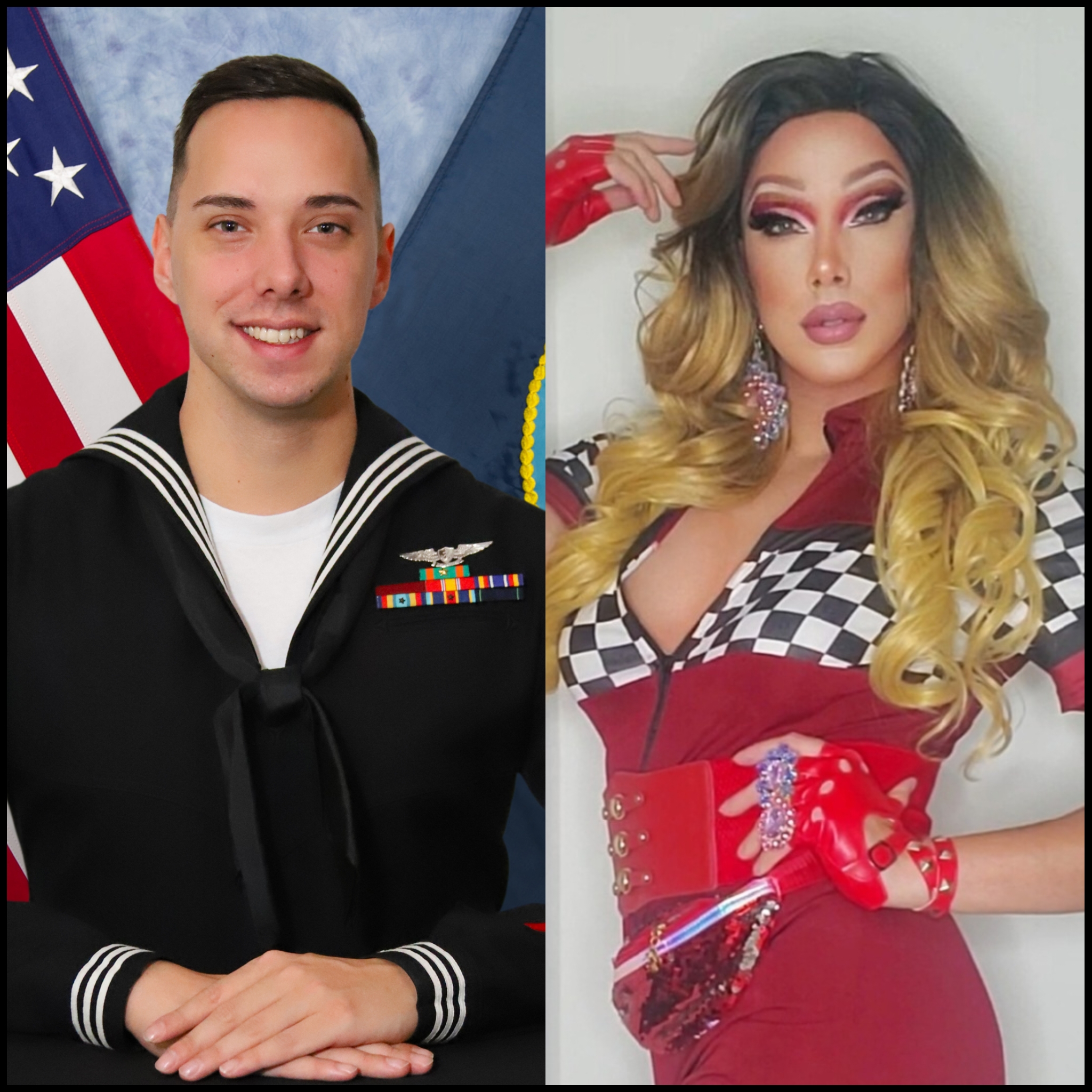The history of drag performances has deep roots in shipboard culture during the Age of Sail. In an environment where, historically, there were few to no women around, dressing in exaggerated feminine attire for stage performances was long a popular form of entertainment at sea, including in the Navy. Sailors in the 1800s frequently dressed as women or mermaids for line-crossing ceremonies honoring King Neptune at the equator. For some closeted LGBTQ+ service members, drag also provided a safe outlet for expression without fear of punishment.


One of the most prominent examples of the popularity of drag in the Navy is Yeoman Second Class Joshua Kelley, an enlisted sailor who also performs under the drag name Harpy Daniels. While on deployment on the aircraft carrier USS Ronald Reagan in 2017 and 2018, Kelley performed as Harpy Daniels in a crew morale-boosting lip sync competition. News of her second performance spread online, generating significant publicity. Harpy Daniels continues to slay in performances that boost morale and show support for LGBTQ+ service members.


Originally from a small town in northeastern Pennsylvania, Kelley grew up in a military family. Their father served 24 years in the Navy. Kelley says they had no interest in the military until they began dating a Marine and learned more about life in the service. When that relationship ended, Kelley decided to enlist in the Navy. The USS Constitution Museum recently talked to them about their experience.
USS Constitution Museum: Tell us about your time in the Navy.
Joshua Kelley: I’ve been in for six years. The true reason I joined was to prove I can serve better than my ex partner and start a new life. I am a YN2, second-class yeoman petty officer. I’m currently stationed at NSWCDD DNA (Naval Surface Warfare Center Dahlgren Division Dam Neck Activity) in Virginia Beach, Virginia.
USSCM: Were you performing drag before you joined the Navy?
Kelley: Yes, I started performing in drag in 2013. Drag had no influence with me joining. It was the Navy I feared that would’ve influenced me to stop doing drag.
USSCM: How did your drag performances shipboard come about?
Kelley: My performance on the ship was from a morale-boosting MWR (Morale, Welfare and Recreation) event. They held a lip sync competition. Knowing this was a regular event, I decided to bring my drag during the deployment because lip syncing and impersonations are a prime performance we do as entertainers. For myself, drag has been a passion, an art, and a way to express myself. The importance of the lip sync event was to raise morale, give us some joy and entertainment. Ship life is difficult. Every day fades into one, and high stress and intensity can bring low morale and can cause suicide and bad behavior.
This event, I found out I saved someone’s life. This person was gay and felt lost and alone, ready to jump ship. But after getting to view my performance, they felt empowered to be themselves and see that our struggles and low morale are temporary. They personally thanked me and said they forgot what life was like for a moment. That’s a struggle we all deal with during deployments and we all have our reasons to lose ourselves. The entertainment of drag was simply a way that brought this person out of the dark. I’m an advocate for the LGBTQ+ community and being able to do drag is not just for me, but a tribute to many service members who were kicked out, harassed, bullied or worse for being openly gay during Don’t Ask, Don’t Tell. It shows representation, and that is truly needed for a culture and organization that has shunned us for so long.
USSCM: There has been some opposition to other drag events hosted by military units. Have you faced any of that?
Kelley: I recently was meant to perform at Langley Joint Air Force Base on July 30, 2022. I was not able to make the DEI (Diversity Equity Inclusion) event. However, I was advertised as a drag performer at the event, and it caused an uproar to many conservatives and Christian extremists. Even Fox News host Tucker Carlson had something to say just to stir many right-wing minds. I face daily online trolls and harassment since I’ve stepped in the spotlight; it honestly comes with any form of publicity. It’s not always easy to deal with, but I’ve learned to grow past it and use it to my advantage. When anyone is in a public figure role, there will always be a side that doesn’t agree. It all just depends in which side you are in that will determine the outcome. Haters will always hate.
USSCM: News of your Navy drag performances have generated a lot of press and a degree of fame. What have been some of the unexpected impacts of telling your story?
Kelley: The biggest impact has been the LGBTQ+ junior sailors who’ve joined because of this, and the amount of opportunities I’ve had to be a voice for the LGBTQ+ community. It’s an honor to be heard and seen, and to now be on a platform to do that for many others is humbling, but very empowering. The amount of support the Navy has given me is spectacular and I can’t wait to continue paving the path for more people to live the legacy of our LGBTQ+ service members, like the ones who’ve paved it for me.
USSCM: What are your plans and goals, both as a drag queen and a Navy sailor?
Kelley: My goals as a sailor are to continue working hard, make first (class) and become the first officer in my family. As for drag, I hope to continue performing, building safe spaces for queer individuals, and one day make it on RuPaul’s Drag Race as one of the first active service members.
* * *
This article has been made possible by a Sustaining the Humanities through the American Rescue Plan (#SHARP) grant from the National Endowment for the Humanities: Democracy demands wisdom. Any views, findings, conclusions, or recommendations expressed in this article do not necessarily represent those of the National Endowment for the Humanities.
The Author(s)
Carl Herzog
Public Historian, USS Constitution Museum
Carl Herzog is the Public Historian at the USS Constitution Museum.


